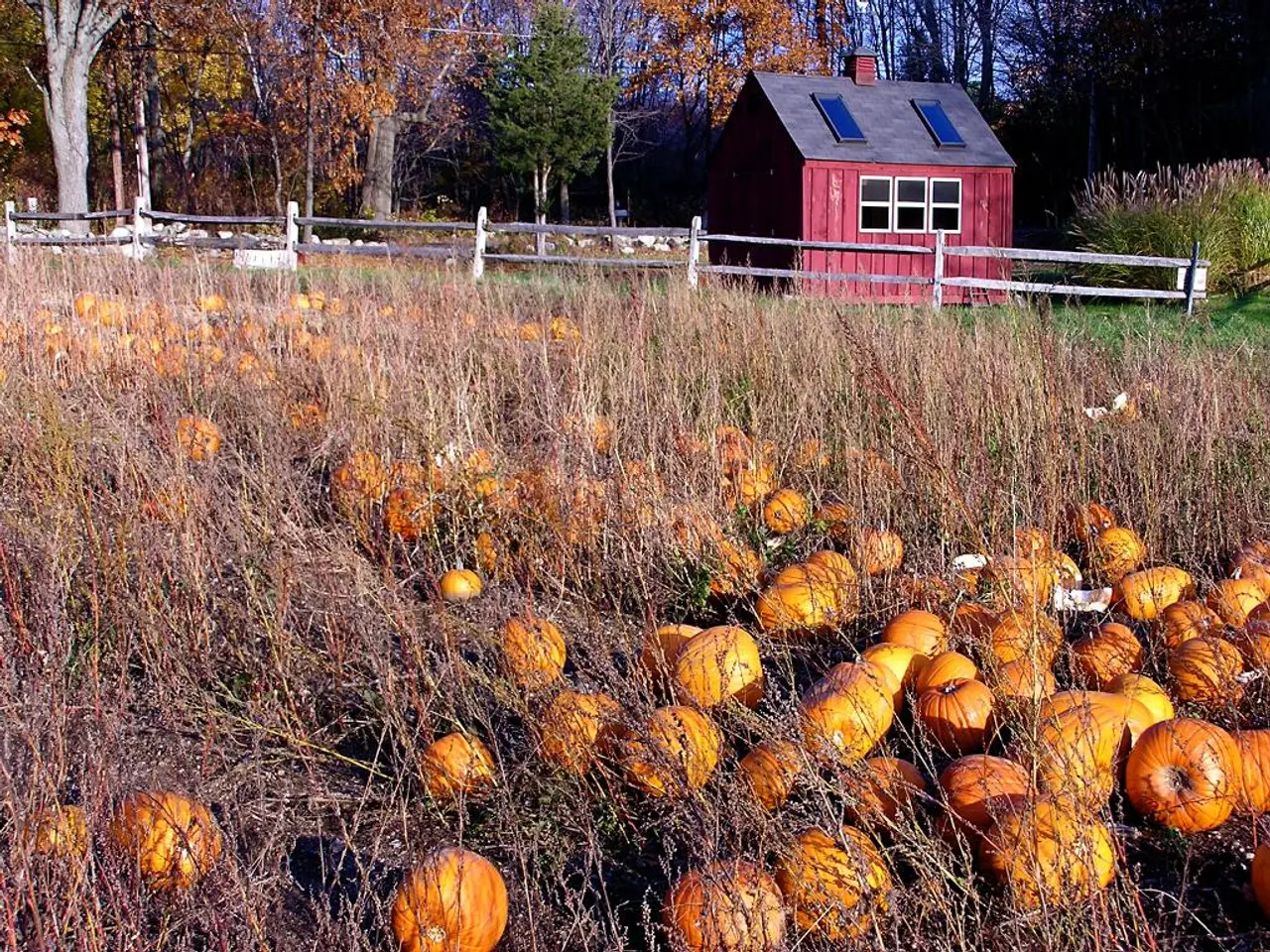Optimal Pumpkin Planting in Seattle: Discovering the Ideal Time for a Productive Yield
===========================================================
In the maritime climate of Seattle, growing pumpkins can be both a challenge and a reward. With the right timing and care, you can enjoy a bountiful harvest of Jack O' Lanterns, pie pumpkins, and even giant pumpkins.
The Ideal Planting Time
To grow pumpkins successfully in Seattle, it's essential to plant them after the last average spring frost date, which typically falls around late March to early April. The specific frost dates for different locations near Seattle are:
- Mount Vernon: March 29 (31°F)
- Anacortes: March 1 (30°F)
- Concrete: April 13 (31°F)
A safe planting window would be around mid-April to early May to avoid frost damage to the warm-loving pumpkin plants.
Preparing the Soil
Preparing the soil for pumpkins is crucial. Use compost, aged manure, and maintain a soil pH between 6.0 and 6.8. Pumpkins need nutrient-rich soil, so add compost every planting and liquid fertilizer every two weeks.
Planting and Spacing
Plant pumpkins outdoors with a distance of 4-6 feet between plants. Pumpkins require full sun and plenty of space to grow, which aligns with Seattle's mild, temperate climate in late spring and summer.
Common Pests and Diseases
Common pests and diseases affecting pumpkins include powdery mildew, aphids, squash bugs and beetles, and proper pollination is important. Powdery mildew can be treated with a solution of 1 tablespoon of baking soda in a gallon of water. Aphids can be removed with a spray of water or a mix of dish soap and water, and ladybugs can be used as a natural solution.
Care and Harvesting
Pumpkins need about 6 hours of full sun each day. Mulch, straw, or bark can be spread around pumpkin plants to keep weeds away and help the soil stay moist. Pumpkins are sensitive to frost, so plants should be kept covered if a frost sneaks back in.
When harvesting pumpkins, it's crucial to pick them before the first frost sets in, usually in September or October in Seattle. The rind should be hard and unyielding, the stem dry and starting to crack, and the pumpkin should have a deep orange hue (or the recommended color for other varieties).
Rain can ruin pumpkins at harvest time, so they should be dried well if it pours. Giant pumpkins take longer to reach their full glory and should be harvested when the fair comes around or when ready for a humble brag with friends.
Seattle's Favourable Growing Season
Seattle's growing season is favourable for pumpkins, with moderate temperatures and plenty of sunshine during the summer months. The city's mild climate allows pumpkins to thrive and grow to their full potential.
Resources for Gardeners in Seattle
Glen, an exceptional gardener with over 15 years of hands-on experience in garden maintenance, design, and landscaping services, shares his knowledge through his latest posts about Garden Fungicides, Candy Cane Peppers, and Watermelon harvesting. For more information and tips on growing pumpkins in Seattle, follow Glen's journey and learn from his wealth of experience.
[1] Seattle Tilth [2] Washington State University Puyallup Research and Extension Center
Incorporating pumpkins into your home-and-garden could yield a delightful harvest in Seattle's mild climate, especially during the late spring and summer months. To cultivate the perfect pumpkin patch, follow the ideal planting time, prepare the soil with compost and maintain a suitable pH, and ensure proper spacing and full sun exposure for your plants.




